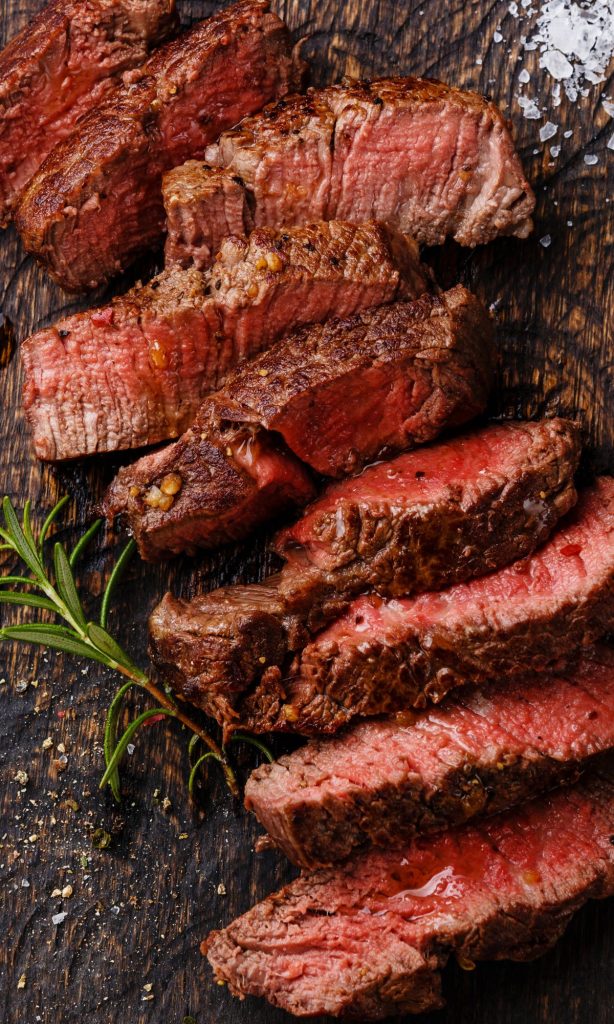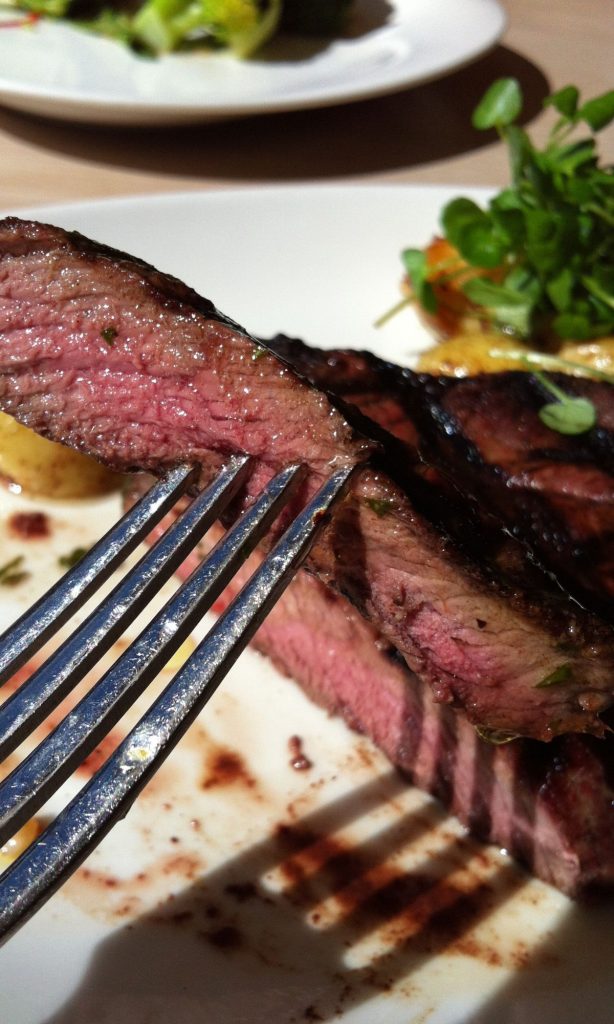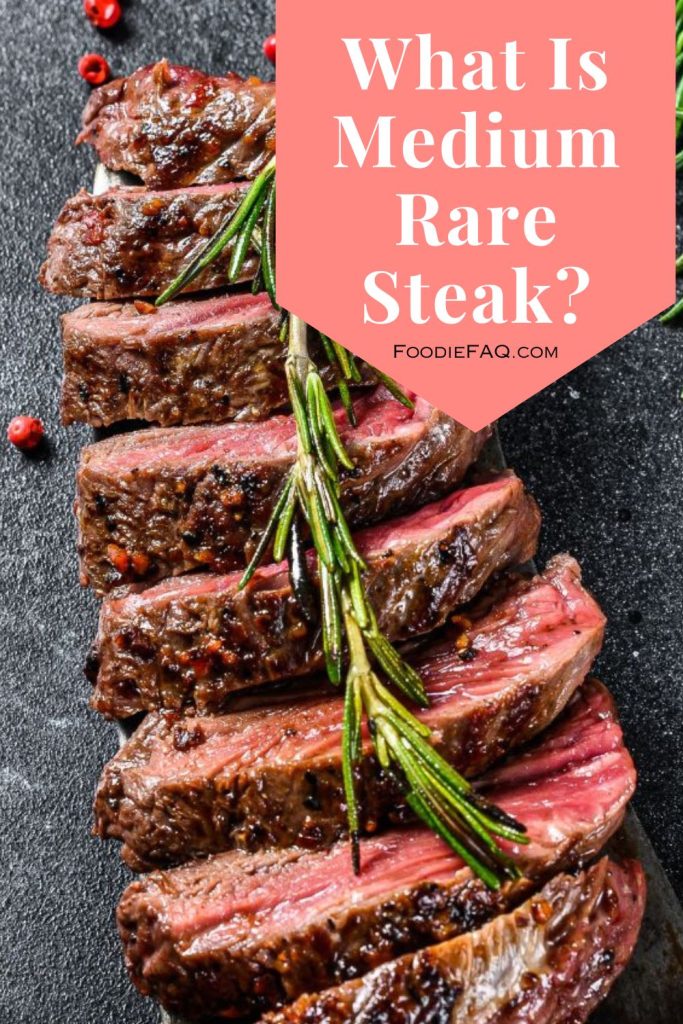A Friendly Chat About That Perfectly Cooked Steak
Hey there, steak lovers! What is a medium rare steak anyways? Let’s dive into the juicy world of steak doneness, and I’ll share some of my own steak adventures along the way.
If you are new to ordering steak, it can be a bit overwhelming to figure out what is what. Also, ordering a medium rare steak can feel a bit scary. Now, I can’t promise you that it will be your favorite way to eat steak but I can tell you that this is a very common method.
Also, it is my favorite way to eat steak. I recently convinced a family member to eat steak this way and she loved it. She was skeptical at first but now she is hooked.

What’s the Big Deal with Medium Rare?
The Magic Behind Medium Rare Steak
You know, medium rare steak is kind of like the Goldilocks of the steak world – not too raw, not too cooked, just right. It’s all about that perfect moment when the steak reaches a state of sublime balance.
Imagine cutting into a steak that’s perfectly pink in the middle – it’s a sight to behold, signaling you’re in for a treat. The outside is seared to a delectable crispiness, encapsulating the flavors inside. Then there’s the center – warm and red, not bleeding but radiating with juiciness.
The texture is something else entirely; tender enough to yield to your knife and fork, almost melting in your mouth. I have had steaks cooked this way that are so tender that I didn’t need a knife. It is a beautiful thing for sure. Each bite is a harmonious blend of flavors, a testament to the art of cooking. This level of doneness brings out the best in the steak, accentuating its natural flavors while maintaining a succulence that’s hard to replicate in any other cooking method.
Why Do We Love It So Much?
There’s a good reason why my steak lovin’ friends and I can’t stop raving about medium rare steak. It’s the epitome of culinary balance – a symphony of texture, flavor, and juiciness that’s hard to beat.
The tenderness is unparalleled; it feels like the steak almost dissolves in your mouth, leaving behind a burst of flavors that dance on your palate. It’s not just about the taste, though. The appeal of medium rare steak is also visual and tactile.
The way it looks on the plate, the feel of it under your knife – it’s an experience that engages all your senses. And let’s not forget the aroma! As soon as a medium rare steak is served, its enticing scent is enough to make your mouth water. It’s a full sensory experience that elevates a simple meal into a memorable dining event.
If you haven’t tried steak at this level of doneness, you’re missing out on a true culinary delight. Trust me, once you’ve tasted it, there’s no going back!
It really is that good!
Let’s Get Cooking: Medium Rare Style
Your Guide to the Perfect Medium Rare Steak
Alright, let’s put on our chef hats! We’re diving into a culinary adventure to achieve that perfect medium rare.
Here’s a step-by-step guide, peppered with tips from my own kitchen experiences:
- Choose Your Cut: Ribeye, sirloin, or tenderloin are the MVPs for medium rare cooking. The thicker the better. This style of cooking is for sure better for thicker steaks vs thin steaks.
- Room Temperature Start: Let your steak sit out until it’s at room temperature – it ensures a more even cook.
- Seasoning Right: A little salt and pepper can go a long way. But hey, feel free to get creative with your favorite spices.
- The Searing Game: Get your pan or grill smoking hot – that sear is crucial for a flavorsome crust.
- Searing to Perfection: Sear each side for about 2-3 minutes. You want that beautiful, caramelized crust. Be careful not to overdo this step. A timer is your best friend.
- Lower the Heat: Now, reduce the heat or move to a cooler part of the grill. This is where patience pays off.
- Checking Doneness: Aim for 130°F to 135°F internal temperature.
- No thermometer? No problem! The touch test works – it should feel soft but springy.
- Rest and Relax: Give your steak a good 5-minute rest after cooking. It lets the juices settle and ensures each bite is as flavorful as it gets.
Is It Done Yet?
Figuring out if your steak is medium rare can be a bit of an art. Look for a nicely browned crust and trust your senses. Remember, the steak will continue to cook a little more after you take it off the heat.
Always remember that touch test. Here’s how you can do it:
- Relax your hand: First, make sure your hand is relaxed and open.
- Feel the base of your thumb: With your other hand, gently press the fleshy area below your thumb. This soft, somewhat squishy texture is similar to what a medium rare steak feels like.
- Compare with the steak: Now, gently press the center of your cooking steak. If it has the same softness as the base of your thumb, it’s likely at medium rare. If it feels firmer, it’s more cooked.
Remember, this method takes a bit of practice and is subjective. The texture of the steak can vary depending on the cut and the amount of fat or marbling.
As you become more experienced with cooking steaks, you’ll develop a better sense of how the texture correlates with doneness.
It’s always a good idea to use a meat thermometer alongside the touch method for accuracy, especially when you’re still getting the hang of it. A medium rare steak should have an internal temperature of about 130°F to 135°F (54°C to 57°C).

Those Burning Questions You Have
Medium Rare vs. The Rest
Compared to other levels of doneness, medium rare is the juiciest and most tender. It’s all about finding that perfect balance of texture and flavor.
Best Cuts for Medium Rare?
In my culinary escapades, I’ve found that ribeye, sirloin, and tenderloin are the champions of medium rare cooking. They embrace the heat just right, giving you that perfect juicy, flavorful bite.
Thickness Matters
The thickness of your steak is a game-changer. Thinner steaks cook quickly – great for a quick meal. Thicker cuts? They take their time but are totally worth it for that perfect medium rare experience. Keep that meat thermometer close!
Conclusion
And that’s your guide to nailing the medium rare steak! Remember, cooking is an adventure filled with trial, error, and a whole lot of fun. So next time you’re standing by the grill or stove, armed with these tips, go ahead and cook up a storm!

